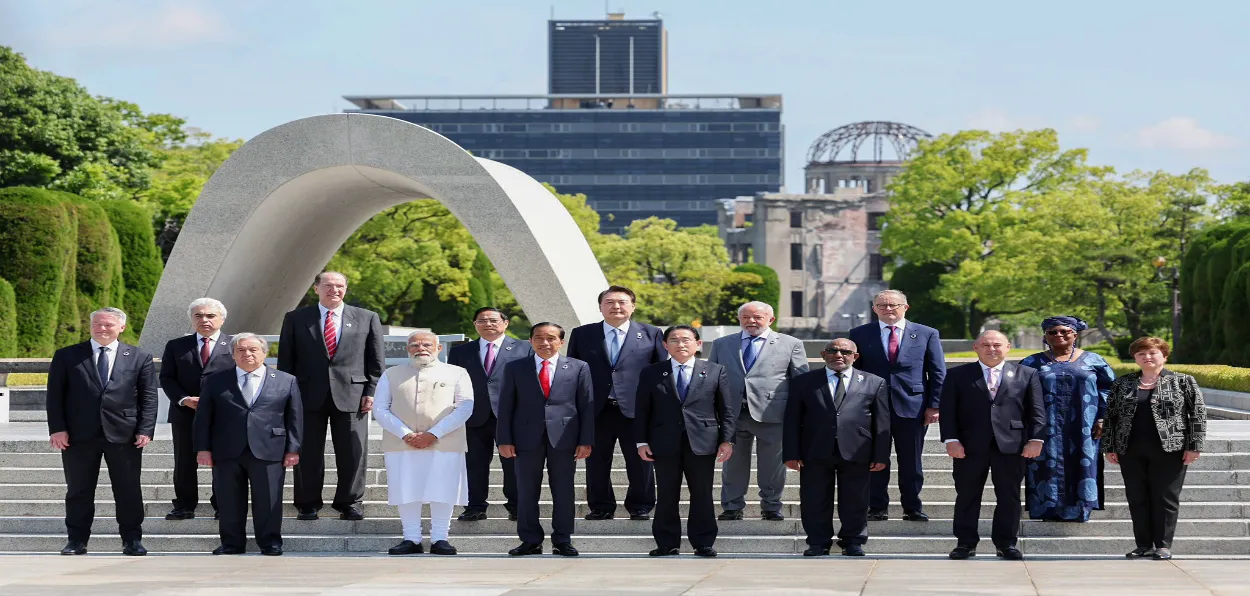
 Sushma Ramachandran
Sushma Ramachandran
South Asia seems to facing an economic crisis as most countries in the region, barring India are seeking help from the International Monetary Fund. Pakistan, Nepal, Sri Lanka, and Bangladesh are all trying to revive their economies with loans from the multilateral financial institution. Amid this turmoil,
India is looking like an outlier as it looks set to become the fastest-growing major economy in the world in 2023-24.
Each of India’s neighbours is facing economic uncertainty of varying degrees. In the case of Pakistan, the political chaos has worsened the economic outlook. Negotiations for a bailout loan from the International Monetary Fund may be continuing but whether it will be possible to meet the terms and conditions now is not known. It is reported that conditionalities for the 6.5 billion dollar assistance programme from the IMF have increased though some measures have been taken at its behest like hiking fuel prices. Even so, inflation has risen to 36 percent while the Pakistani currency is depreciating.
Among the unusual policies that led to the current crisis are quixotic moves by the previous Imran Khan government to cut retail petroleum rates when world crude oil prices were rising sharply. Islamabad's involvement in China’s Belt and Road Initiative entailed heavy costs on the exchequer while bringing little benefits as materials and manpower were provided by China. Climate change in the form of unprecedented floods last year brought more havoc on the economy.
India’s southern neighbour, Sri Lanka has also recently undergone political and economic upheaval. Earlier President Gotabaya Rajapaksa had to flee the country in the wake of mass demonstrations protesting high inflation and persistent shortages of basic goods. The reins of government were then handed over to President Ranil Wickremesinghe who negotiated a 2.9 billion dollar loan from the IMF. The first tranche of the loan has been issued and the country seems to be inching toward recovery despite inflation remaining at 35 percent. Policy changes are under way in line with the IMF's directives including a rollback of earlier tax cuts.
It was these deep tax cuts that were among the unusual policies that fuelled the emergency in Sri Lanka. These created severe revenue shortfalls and the situation was worsened by a decision to shift completely to organic fertilisers. The result was shortages of the staple foodgrain - rice - forcing Colombo to import food. The production of tea also feel so was its export.
Both Nepal and Bangladesh have also been affected by the pandemic as well as the ripple effects of geopolitical developments. Nepal took an IMF loan last year and seems to be recovering with tourism and inward remittances picking up. Bangladesh has also just been granted a bailout facility by the IMF to cope with soaring energy and food costs following the Ukraine war. It faced a sharp widening of the current account deficit and a decline in foreign exchange reserves.
Amid the troubles facing its neighbours, India is looking amazingly resilient and has shaken off much of the impact of geopolitical events. It is set to grow by 6 to 6.5 percent in 2023-24, thereby retaining its tag as the fastest-growing major economy in the world. This is despite continuing concerns over external headwinds especially volatile oil prices and declining exports.
The country was faced like others in the region with inflationary pressures, especially since mid-2022 and the Reserve Bank of India also aggressively hiked interest rates like other central banks around the world. But it has now taken a pause and the latest data shows inflation having been contained at 4.7 per cent in April. Demand has also picked up as is evident in robust sales of automobiles which comprise nearly 50 percent of the manufacturing sector. Inflows from the Goods and Services Tax (GST) have also risen to about Rs 1.8 lakh crore per month, ensuring that government revenues will be buoyant in the current fiscal.
Another area where the economy has performed consistently is in agriculture where output rose by about four percent even during the pandemic year. This has ensured food security at a time when many other countries are facing shortages due to curtailing of grain exports from Russia and Ukraine.
On the other hand, most of South Asia has been grappling unsuccessfully with shortages of food and basic goods along with uncontrolled inflation. This is partly due to the impact of the pandemic. The situation was aggravated by the collapse of global supply chains and surging commodity prices after the outbreak of the Ukraine war. In the case of Pakistan, climatic changes in the form of excessive floods also played their role. Yet a big factor has also been misguided economic policies. These would have been disastrous even without the impact of external headwinds.
For India, the crises in the region are worrisome as they could have unforeseen consequences. In the case of Sri Lanka and Bangladesh, for instance, there is a concern that migration could increase due to economic deprivation. An influx of refugees could become a problem in the long run.
In sharp contrast to the rest of the region, however, the Indian economy has managed to survive the rigors of the geopolitical developments of the past year despite concerns over higher oil prices and the widening of the current account deficit. In other words, it is an easy option to blame external headwinds for the economic crises facing India’s neighbours. They now need to adopt prudent long-term strategies to bring stability to their economies, rather than rely on the short-sighted policies of the past few years.
